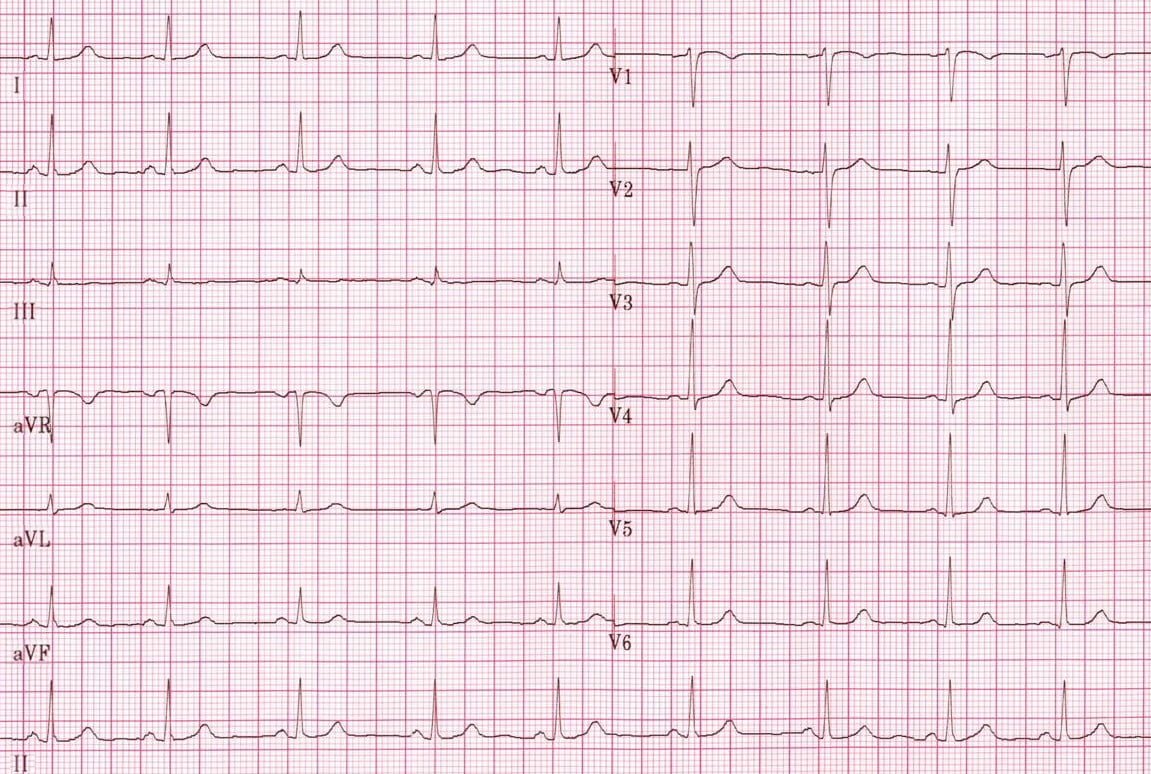Updated on August 15, 2023
If you cannot identify a normal ECG rhythm, you cannot identify an abnormal rhythm with confidence.
A rhythm that is originated from Sinus node (SA node) and containing a p wave followed by qrs complex is called a normal sinus rhythm.
Each impulse generated at SA node will spread to atria and AV node.
Atrial contraction is seen as p wave on ECG
The AV node will have some delay in sending the impulses to ventricles. This delay is between the start of impulse at SA node and start of ventricular contraction (qrs complex) is PR interval (as shown in image).
The ECG complex. P=P wave, PR=PR interval, QRS=QRS complex, QT=QT interval, ST=ST segment, T=T wave
The ventricular contraction will generate QRS complex on ECG. and ventricular relaxation will generate T wave on ECG.
The segment between end of ventricular contraction and start of relaxation is ST segment.
The total duration of ventricular contraction and relaxation is QT interval.

A sinus rhythm with a rate of less than 50 beats per minute is called as sinus bradycardia. When we say sinus, it should have a complete waveform with a p wave and qrs complex

If the sinus rhythm has a rate above 100, you can call it sinus tachycardia.
If you look at the ECG below, you’ll find a complete wave form with p and qrs complex in each beat.

There are other sinus rhythms such as sinus arrest, sinus pause, sinus arrythmia but they are not discussed in ACLS. You may learn about them if interested personally.